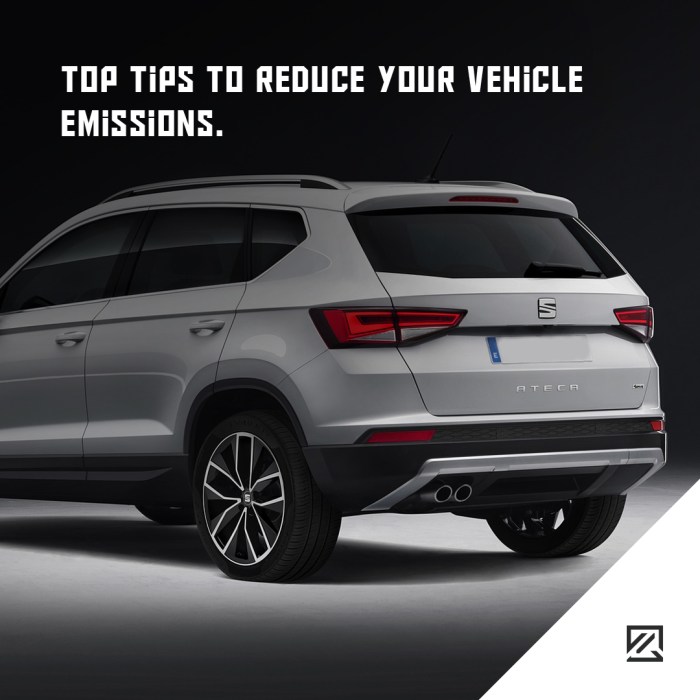The automotive industry is undergoing a significant transformation, driven by the urgent need to reduce greenhouse gas emissions and combat climate change. As a consumer, your car choices in 2025 and beyond play a crucial role in this transition. This comprehensive guide explores various strategies to minimize your vehicle’s environmental impact, encompassing vehicle selection, driving habits, and long-term planning.
Choosing a Low-Emission Vehicle: Your First Step
The most impactful decision you can make is selecting a vehicle with inherently lower emissions. Several options exist, each with its own set of advantages and disadvantages:
Electric Vehicles (EVs): The Leading Choice for Emission Reduction
Electric vehicles are rapidly gaining popularity due to their zero tailpipe emissions. Charging your EV with renewable energy sources further minimizes its carbon footprint. However, considerations include battery production impacts, charging infrastructure availability, and range anxiety. Factors like battery life, charging time, and the overall cost of ownership should also be carefully weighed. Research different EV models to find one that suits your needs and budget.
Look for models with high energy efficiency ratings and long-range capabilities.
Hybrid Vehicles (HEVs): A Balanced Approach
Hybrid vehicles combine a gasoline engine with an electric motor, offering improved fuel efficiency compared to traditional gasoline cars. While they still produce emissions, they significantly reduce them compared to purely gasoline-powered vehicles. HEVs are a good stepping stone towards full electrification, particularly for those hesitant to fully commit to an EV.
Plug-in Hybrid Electric Vehicles (PHEVs): Bridging the Gap
PHEVs offer a blend of electric and gasoline power, allowing for longer electric-only driving ranges than standard HEVs. They can be charged at home or public charging stations, offering greater flexibility. However, the total emissions depend heavily on how often you can utilize the electric mode.
Fuel-Efficient Gasoline and Diesel Vehicles: A More Traditional Approach
While not emission-free, advancements in engine technology have led to significant improvements in fuel efficiency for gasoline and diesel vehicles. Look for vehicles with high EPA fuel economy ratings and consider factors like engine size and weight. Modern gasoline engines often incorporate technologies like direct injection and turbocharging to enhance efficiency. However, remember that these vehicles still contribute to greenhouse gas emissions.
Beyond Vehicle Choice: Driving Habits Matter
Even the cleanest vehicle will have a larger carbon footprint if driven inefficiently. Consider these driving habits to minimize emissions:
Eco-Driving Techniques: Making Every Mile Count
- Maintain a steady speed: Avoid rapid acceleration and braking.
- Anticipate traffic: Smooth driving reduces energy waste.
- Use cruise control on highways: Maintains a consistent speed.
- Reduce idling time: Turn off your engine when stopped for extended periods.
- Proper tire inflation: Improves fuel efficiency.
- Regular vehicle maintenance: Ensures optimal engine performance.
Planning Your Routes: Efficiency and Congestion
Utilize navigation apps that consider traffic conditions and suggest optimal routes to minimize fuel consumption and time spent idling in traffic. Carpooling or using public transport for certain journeys can significantly reduce your overall emissions.

Source: co.uk
Long-Term Planning and Sustainable Practices
Your automotive choices extend beyond the initial purchase. Consider these long-term strategies:
Responsible Vehicle Disposal: End-of-Life Management
When it’s time to replace your vehicle, ensure it’s disposed of responsibly. Recycle or donate your old car to minimize waste and environmental impact. Many automotive manufacturers have programs to help with responsible vehicle disposal.
Investing in Renewable Energy: Powering Your EV
If you choose an EV, consider installing solar panels on your home to power your vehicle using renewable energy. This further reduces the carbon footprint associated with charging your battery.
Frequently Asked Questions (FAQ)
- Q: What is the best type of vehicle for reducing emissions? A: Electric vehicles (EVs) currently offer the lowest tailpipe emissions. However, the overall environmental impact depends on factors like electricity source and battery production.
- Q: How can I improve my fuel efficiency? A: Practice eco-driving techniques, maintain proper tire pressure, and ensure regular vehicle maintenance.
- Q: Are hybrid cars worth it? A: Hybrids offer a balance between fuel efficiency and affordability, making them a viable option for many drivers.
- Q: What are the drawbacks of EVs? A: Drawbacks include range anxiety, charging infrastructure limitations, and the environmental impact of battery production.
- Q: How can I find information on vehicle emissions? A: Check the EPA’s FuelEconomy.gov website for fuel economy and emissions data for various vehicles.
Resources
Call to Action
Making informed automotive choices is crucial for reducing your carbon footprint. By carefully considering the options Artikeld in this guide and adopting sustainable driving practices, you can contribute significantly to a cleaner and healthier environment. Start researching low-emission vehicles today and make a difference!
Clarifying Questions
What are the most fuel-efficient car types in 2025?
Hybrids and fully electric vehicles generally offer the best fuel efficiency, though specific models vary greatly in their performance.

Source: milta.co
How do I calculate my vehicle’s carbon footprint?
Several online carbon footprint calculators are available that take into account factors like vehicle type, fuel consumption, and mileage.
What are the long-term costs of owning an electric vehicle?
While the initial purchase price might be higher, long-term running costs can be lower due to cheaper electricity compared to gasoline.
Are there government incentives for buying eco-friendly cars?
Many governments offer tax credits, rebates, and other incentives to encourage the purchase of electric and hybrid vehicles. Check your local regulations for details.
